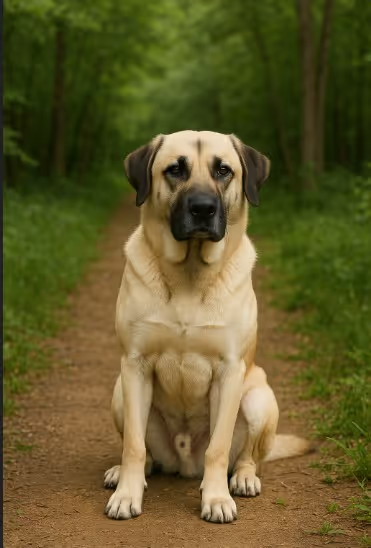The Anatolian Shepherd Dog is a large, rugged guardian breed developed over thousands of years to protect livestock in the harsh terrain of Turkey. Known for their independence, intelligence, and unwavering loyalty, these dogs are natural protectors that excel in working roles. While not a typical family companion, with proper training and early socialization, Anatolians can be calm and devoted pets in the right environment. Their stoic nature and strong guarding instincts make them well-suited to rural settings and experienced owners.

The Anatolian Shepherd Dog traces its roots back over 6,000 years to the Anatolian Plateau in modern-day Turkey. Bred by nomadic herders to protect livestock from predators like wolves and bears, they evolved to be highly self-reliant and resilient. Their lineage includes mastiff and sighthound-type dogs, contributing to their strength and keen awareness. The breed gained popularity in the U.S. during the 1970s for livestock protection and was officially recognized by the AKC in 1996. Today, Anatolians are still widely used on farms and ranches across the world.
The Anatolian Shepherd Dog is powerfully built and alert, with a short-to-medium double coat and a balanced, muscular frame.
Key Features:
★★★☆☆
Although generally low maintenance, the Anatolian Shepherd requires consistent grooming during seasonal shedding.
★★★☆☆
Anatolian Shepherds are calm but need space and purpose to thrive.
★★★☆☆
Training an Anatolian Shepherd Dog requires patience and firm, experienced handling.
This large, slow-maturing breed needs a nutrient-dense but balanced diet.
The Anatolian is generally healthy but, like all large breeds, prone to certain conditions:
Life Expectancy: 11–13 years
Vet Tip: Consider a slow feeder and avoid heavy activity right after meals
Due to their unique needs, adoption or purchase should be done thoughtfully.
Questions to Ask Breeders:
Resources:
Are Anatolian Shepherds good with children?
They can be affectionate with children in their own family but may be wary of visiting kids unless properly socialized.
Can they live in suburban areas?
Not ideal. They do best in rural environments with land to roam and a job to do.
Do they get along with other dogs?
Generally not in same-sex households or with unfamiliar dogs. Early socialization helps, but they often prefer solitude.
Are Anatolian Shepherds aggressive?
They are not aggressive by nature, but their guarding instinct can cause assertiveness if not well managed.
Do they bark a lot?
Yes, especially at night. Their alertness and guarding instinct make them highly vocal.